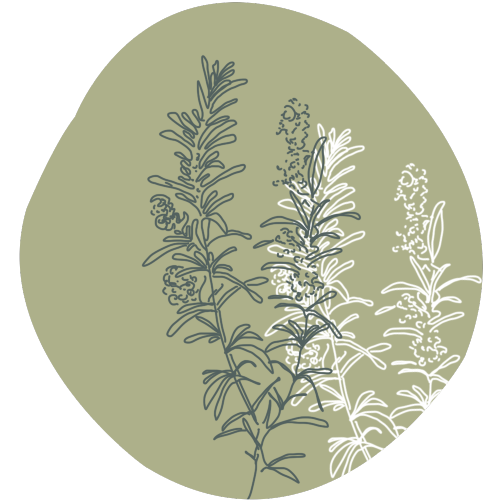Verbenone
A complex essential oil of rosemary officinalis.

A complex essential oil of rosemary officinalis.
An aromatic plant from the Mediterranean region, with grey-green needle-like leaves and small whitish to blue flowers. It likes very sunny areas and arid land. Depending on the soil in which it grows, it offers us three different essential oils. In this case, the ABV chemotype - with Bornyl acetate and Verbenone - comes from Corsica, or sometimes from South Africa, and offers penetrating, warm and flowery fragrances.
Internal use:
External use:
External use ++
Internal use: no
Its essential oil is quite distinct from the other two chemotypes of the species - cineole and camphor - in its complexity: it contains monoterpenes, ketones (camphor in moderate quantities and especially verbenone), an ester (bornyl acetate) and 1,8 cineole, the content of which is quite low this time.
Internal use
External use
External use
The aroma of Rosemary essential oil reflects its richness and balance: warm, complex, penetrating. Like all Rosemary chemotypes, it puts the senses on alert and combats mental lethargy, but with restraint. It allows active lucidity with regard to ourselves and the world around us. It calms excesses and helps to break out of addictive patterns. It is an essential oil of balance and harmony.
The information provided in this Guide to Essential Oils is for information purposes only: it is a synthesis of the properties described in recognised aromatherapy books and/or in accordance with ancestral and popular traditions. The properties presented are extracted from the works cited in the bibliography below. This is in no way a medical information or a list of indications.